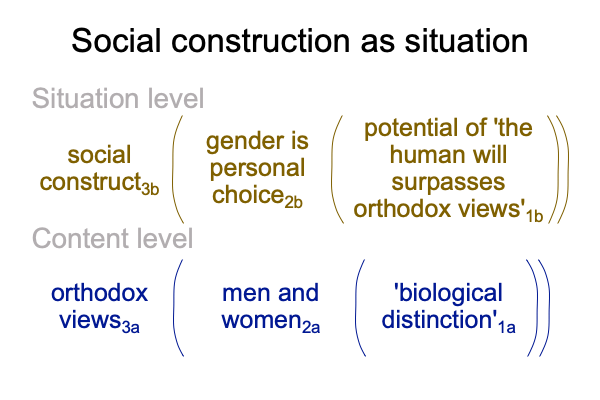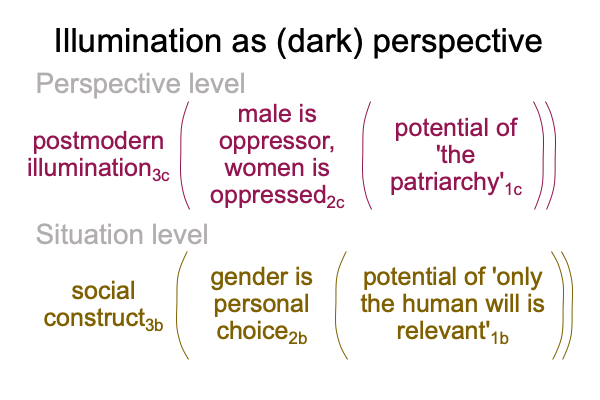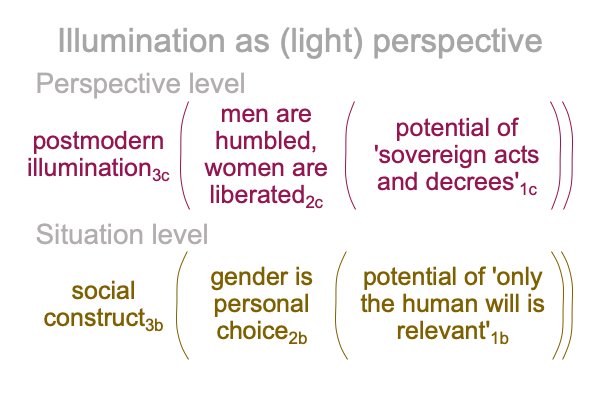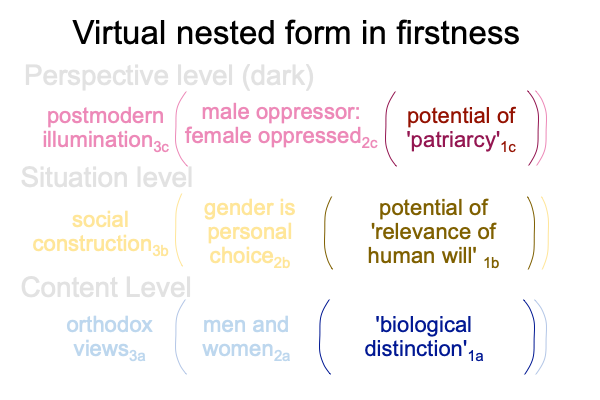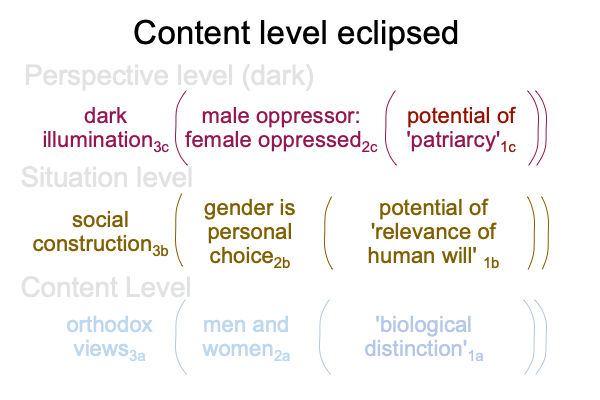Looking at Gad Saad’s Book (2020) “The Parasitic Mind” (Part 2 of 17)
0008 Now, people talk about men and women all the time. They act within a traditional framework3a where ideas about men and women2a emerge from (and situate) the potential of sexual dimorphism, as expressed in humans1a. Explicit ideas2a can be articulated in speech-alone talk. Conversations may be recorded for scientific inquiry. Implicit ideas2aproduce expressive phenomena, such as blushing or averting one’s gaze, that can be observed and measured using instrumentation (surveillance cameras).
Consequently, cognitive psychology3b virtually situates the same content-level nested form as social construction3b.
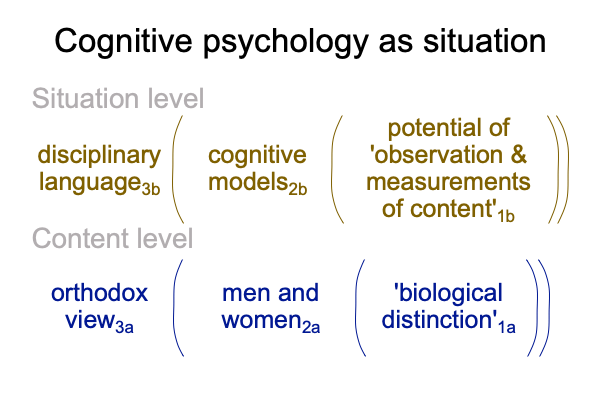
0009 The difference is obvious. Social constructionism does not observe and measure1b attitudes and behaviors associated with the orthodox view3a. Rather, social construction3b virtually situates othodox views3a with a situation-level potential1b, the human will1b, which is an explicit abstraction concerning human nature.
Saad calls the forced choice between the scientific potential of observations and measurements1b and the constructionist potential of the human will1b, “intellectual terrorism”.
Well, terrorists hold people and things hostage. What do social constructionists hold hostage?
Ah, it must be observations and measurements1b.
Is that what makes these postmodern movements anti-science?
0010 But, there is more.
The content-level is also virtually situated by traditional formulations about the nature of the content-level. In the West, these forms come from churches, for the most part. They are very old, but still remain within our current Lebenswelt.
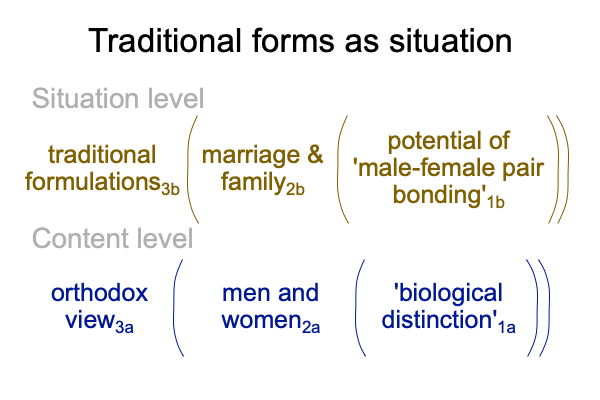
0011 The normal context of traditional doctrines3b brings the actuality of marriage and the family2b into relation with the potential of male-female pair bonding1b.
Isn’t that reasonable?
The relational logic of marriage is portrayed in A Primer on the Family, by Razie Mah, available at smashwords and other e-book venues.
Nature appears to express its own will. There is a natural intention1b (male-female pair bonding) that virtually situates a biological distinction1a. Plus, that natural intention1b appears at the very start of the foundational text for Christian civilization. Remember Adam and Eve?
0012 What is another thing that social constructionists hold hostage?
Ah, it must be male-female pair bonding.
0013 The possibility of male-female pair bonding1b underlies marriage and family2b in the normal context of tradition3b. Plus, male-female pair bonding1b emerges from (and situates) the entire contenta level. Male-female pair bonding1baccounts for the entire contenta level. It is perfectly reasonable that human bodies are adaptations into the niche of male-female pair bonding.
This is what makes postmodern movements anti-reason.

